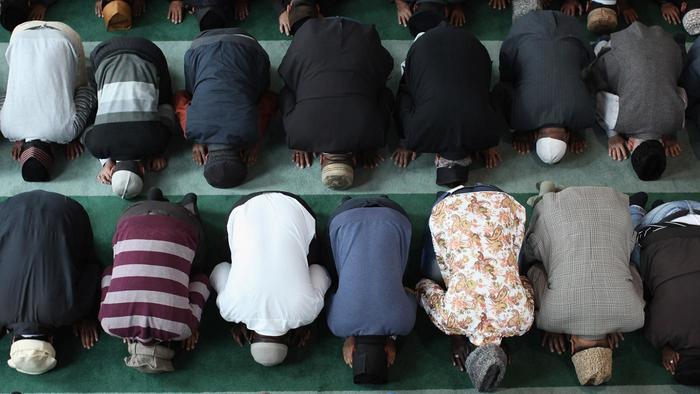
Jama`ah means a congregation of people who are praying behind one imam in continuous lines without any barrier or interruption.
A woman asks about the ruling of Shari`ah on building a wall in the prayer hall to separate between men and women?
Answer:
It is perfectly Islamic to hold meetings of men and women inside the Masjid (mosque), whether for prayers or for any other Islamic purpose.
Giving a detailed answer to the question posed, Dr. Muzammil H. Siddiqi, president of the Fiqh Council of North America, states:
Both men and women are allowed to pray in the Mosque in the same Jama`ah (congregational prayer). When men and women are together in the Masjid, then we should have first men’s lines behind the imam (prayer leader), then children and then women. This is the way Muslims used to pray behind the Prophet (peace be upon him). He did not make or ask his Companions to have a curtain or wall between the lines of men and women.
According to the Shari`ah (Islamic Law), it is not obligatory to have a partition, neither of temporary nor of permanent nature, between men and women in the Masjid.
It is, however, very important that Muslim women come to public gatherings wearing proper Islamic dress, for it is Haram (forbidden) for a Muslim woman to attend a public gathering without a full Islamic dress. She must be covered properly and her dress should be modest and loose enough in order not to reveal the shape of her body.
It stands to reason that partitions were introduced inside the Masjids later in Islamic history. This was done, perhaps, because some women began coming to Mosques without observing proper Islamic dress, or perhaps, some men wanted to discourage them from coming to Mosques. In the time of the Prophet (peace be upon him) there was no curtain or partition in his Masjid, although women used to come to the Masjid almost for every prayer and for many other gatherings.
It is, however, reported that women used to come to the Masjid dressed up in long clothes. `A’ishah (the Mother of the Believers, may Allah be pleased with her) said that the believing women used to attend the Fajr (Dawn prayer) with the Prophet (peace be upon him). They used to come wrapped up in their long garments and then they used to return to their homes after the prayer, no one could recognize them because of the darkness. (Al-Bukhari)
Jama`ah means a congregation of people who are praying behind one imam in continuous lines without any barrier or interruption. As for people who pray behind the imam, they should either see the imam or see those who are in front of them.
There is no Jama`ah when a person is in one room and his/her imam in another room, the lines are not continuous and the people behind the imam are also not visible, otherwise people would not have to come to the Masjid for Jama`ah prayer. They would stay home and pray listening to the loudspeakers from their Masjid or through intercoms. They could nowadays even pray Jama`ah prayer in this way in their own homes listening to the prayer broadcasts coming from Makkah and Madinah on their radios, television sets or through the Internet. But no jurists have ever allowed a Jama`ah prayer in this way.
The definition of Jama`ah that I gave above is a general one and it is applicable to both men and women. Only in the case of necessity this rule can be relaxed. For example, if the Masjid was too small and people had to pray on different levels or in different rooms to accommodate every person then this would be permissible because of necessity. Muslims should not deliberately and for no reason bifurcate their congregation in their Masajid.
If there is a concern that the lines of men and women will mix inside the Masjids, then there is no harm in putting a barrier, only to demarcate the separate area for women. But women should not be put in a totally separate room in the Masjids unless there is a shortage of space and no other proper arrangement can be done for them.
___________________
Source: onislam.net.
[opic_orginalurl]

